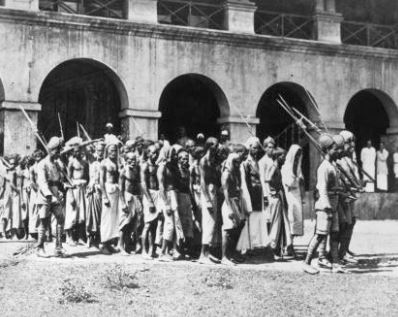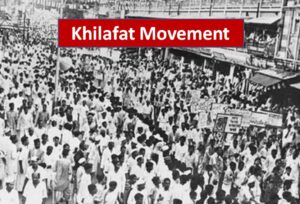What is Khilafat Movement -A Historic Struggle for Islamic Unity and Justice
The Khilafat Movement was a significant political and religious movement that emerged in the early 20th century, primarily in the Indian subcontinent. The main motive of this movement was to protect the institution of the Caliphate and voice the concerns of Muslims worldwide. The movement, led by prominent Muslim leaders, sought to unify the global Muslim community and address the injustices faced by Muslims in the aftermath of World War I. If you are preparing for government jobs in India then this article is very handy for you. Here get step by step general knowledge about Khilafat Movement, its origins, objectives, impact, and legacy, highlighting its importance in the context of Islamic history.
Causes- Why and When Started?
The Khilafat Movement started in India in 1919. The reason behind Khilafat Movement was due to abolition of the Ottoman Caliphate, following the end of World War I. The Treaty of Sèvres, signed in 1920, imposed severe restrictions on the Ottoman Empire, including the loss of territory and the curtailment of its sovereignty. The potential demise of the Caliphate, considered the spiritual and political center of the Islamic world, deeply concerned Muslims worldwide.

The Muslims around the world were very much disappointed. They decided to show their anger and protest to British Government. So the Khilaftat Movement was initiated in India and was spread worldwide.
What Was the Objective of Khilafat Movement :- The primary objective of the Khilafat Movement was to protect the Caliphate from being dismantled entirely and to address the perceived injustices faced by Muslims under the post-war settlement. It aimed to mobilize Muslims, both in the Indian subcontinent and beyond, to voice their concerns and seek redress.
Who Were Muslim Leaders of Khilafat Movement?
Maulana Muhammad Ali Jauhar, Maulana Shaukat Ali, and Abul Kalam Azad were among the top leaders who led the Khilafat Movement. These leaders, who were also associated with the Indian National Congress, recognized the significance of Muslim unity and cooperation in their struggle for justice.
How did Khilafat Movement Worked (Methods and Activities)?
Motive of The Khilafat Movement as the name suggest was to go against British Government Policies. The leader used various methods to achieve its objectives. Non-cooperation with the British colonial government became a central strategy. Both Hindus and Muslims joined hands against the atrocities by the English Government.
The other strategy followed were:
- Protests
- Strikes
- Boycotts of British goods being organized.
Both Hindus and Muslims came Together
Muslims, along with their Hindu compatriots, joined hands in the larger Indian independence movement, seeking a common goal of freedom from colonial rule.
The movement also launched a significant civil disobedience campaign, including the famous Chauri Chaura incident in 1922. But die to some violence and other factors Indian National Congress leaders have to suspend non-cooperation movement due to which the leaders have to rethink about their freedom fight strategy.
Impact of Khilafat Movement on Freedom Struggle?
The Khilafat Movement proved the unity of Muslims and gave a hint to the government that their days are soon going to over. It also put a solid impact on Indian politics, the global Muslim community, and the discourse on justice and self-determination. Apart from unity and resilience of Indian Muslims, world also noticed about the atrocities done by British government.
Was Khilafat Movement Successful? This high level movement did not achieve its main goal of preserving the Caliphate. The groundwork for the demand of Muslim political rights and a separate homeland, which eventually led to the establishment of Pakistan in 1947. Moreover, it played a pivotal role in shaping the political consciousness of Indian Muslims and their struggle for independence.
Secondly this Khilafat Movement also shown the power of nonviolent resistance and civil disobedience. This was proven to be a highly effective tools of protest. Future leaders like Mahatma Gandhi who adopted similar methods in the fight against British rule.
Furthermore, the movement introduced new generation of Muslim leaders such as Maulana Muhammad Ali Jauhar and Maulana Shaukat Ali who continued to champion the cause of justice and Muslim rights. They promoted Muslim education, social welfare, and interfaith dialogue.
Read Also: All about Rowlatt Act: Cause, Effect, result
Khilafat Movement in Brief
The Khilafat Movement remains an important chapter in the history of Islamic revivalism and the struggle for justice. It represented the collective voice of Muslims worldwide. While the movement could not achieve its final goal but, its impact on Indian politics, the global Muslim community, and the fight for independence cannot be undermined. It served as a catalyst for political awareness, unity, and the quest for justice, leaving a lasting legacy in the annals of Islamic history.


